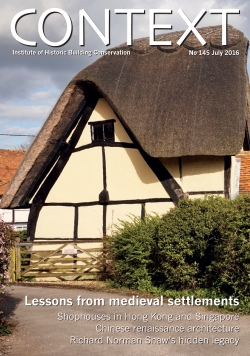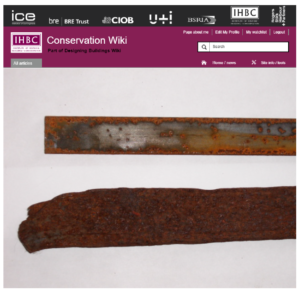England’s Department for Education has published for consultation proposals for a new funding model for apprenticeships and further details on the apprenticeship levy as £2.5 billion will be invested in apprenticeship training in England by 2020 under plans recently unveiled.
Government writes:
The funding will support people of all ages to gain high-quality skills and experience and help employers to offer more training opportunities and build a skilled workforce.
Under the plans for the levy, the government has proposed that employers that are too small to pay the levy – around 98% of employers in England – will have 90% of the costs of training paid for by the government, reassuring millions of small businesses.
Extra support – worth £2,000 per trainee – will also be available for employers and training providers that take on 16- to 18-year-old apprentices or young care leavers. Employers with fewer than 50 employees will also have 100% of training costs paid for by government if they take on these apprentices. This will help to ensure every young person, regardless of background or ability, has the chance to make their first step into work.
Apprenticeships and Skills Minister Robert Halfon said: ‘We need to make sure people of all ages and backgrounds have a chance to get on in life. Apprenticeships give young people – especially those from disadvantaged backgrounds – a ladder of ?opportunity. That’s why we continue to work tirelessly to deliver the skills our country needs. The apprenticeship levy is absolutely crucial to this. Our businesses can only grow and compete on the world stage if they have the right people, with the right skills. The apprenticeship levy will help create millions of opportunities for individuals and employers. This will give our young people the chance they deserve in life and to build a highly-skilled future workforce that the UK needs.’
The government is inviting employers and training providers to have their say on the initial funding proposals, to try to ensure final plans fully meet the needs of all those involved in the apprenticeship programme.
The proposals outlined include plans to:
- support all employers to offer high-quality apprenticeships: employers which are too small to contribute to the apprenticeship levy would have 90% of the cost of apprenticeship training paid – ensuring employers of all sizes can develop the next generation of skilled workers
- provide extra funding for young apprentices and care leavers: the government will pay an additional £2,000 to help 16- to 18-year-olds, young care leavers and young people with an education, health and care (EHC) plan, make their first step into the world of work – with £1,000 going to employers and an additional £1,000 to training providers. Furthermore, employers with fewer than 50 employees will not have to pay anything towards the cost of training a 16- to 18-year-old apprentice, young care leaver or young person with an EHC plan
- offer more flexibility for employers to retrain individuals: employers will be able to use levy funds to retrain workers in new skills, even if they have prior qualifications – giving them the freedom to make the training decisions that are right for them so they can train any individual to start an apprenticeship, as long as it is significantly different from their previous qualifications
- support employers taking on more apprentices: levy-paying employers – those with a pay bill of over £3 million that want to spend more on training than is in their digital account – will benefit from government support with 90% of their additional apprenticeship training costs being funded, so they can continue to recruit and retrain highly-skilled employees
- give employers more control and access to better quality training: employers will have the power to determine exactly what training their apprentices receive and what provider they receive it from. A new register of training providers, also outlined today, will be introduced from April 2017 to improve the link between training providers and employers to will help employers identify a high-quality provider so they can deliver the skills they need to grow.
Petra Wilton, the Chartered Management Institute’s (CMI) Director of Strategy, said: ‘Apprenticeships are a proven route for raising business productivity. Leading employers are already adopting the new professional pathways such as the chartered manager degree apprenticeship, and the new generous levels of government co-investment announced today are welcomed by many businesses, especially those smaller organisations outside the scope of the levy. I strongly encourage employers to get involved and ensure that this extensive new offer fully meets their needs. As it can provide the much needed injection of confidence and certainty in the skills agenda, which is needed now more than ever.’

 The North West (NW) Branch of the IHBC has launched its 2016 Day Conference, ‘Home is where the heart is: Meeting housing need in historic buildings and areas’, which will take place on 6 October at the Liverpool Medical Institution.
The North West (NW) Branch of the IHBC has launched its 2016 Day Conference, ‘Home is where the heart is: Meeting housing need in historic buildings and areas’, which will take place on 6 October at the Liverpool Medical Institution. If you are a member of the Chartered Institute for Archaeologists (CIfA) you can get free access to IHBC member support for a whole year – including 5 issues of Context – by joining IHBC online now.
If you are a member of the Chartered Institute for Archaeologists (CIfA) you can get free access to IHBC member support for a whole year – including 5 issues of Context – by joining IHBC online now. The IHBC’s Conservation Wiki resource on Designing Buildings Wiki has had a new entry on Wrought iron posted by Joe Orsi IHBC, who described the resource as ‘easy to navigate and use. A great tool for professional conservators and crafts.’
The IHBC’s Conservation Wiki resource on Designing Buildings Wiki has had a new entry on Wrought iron posted by Joe Orsi IHBC, who described the resource as ‘easy to navigate and use. A great tool for professional conservators and crafts.’